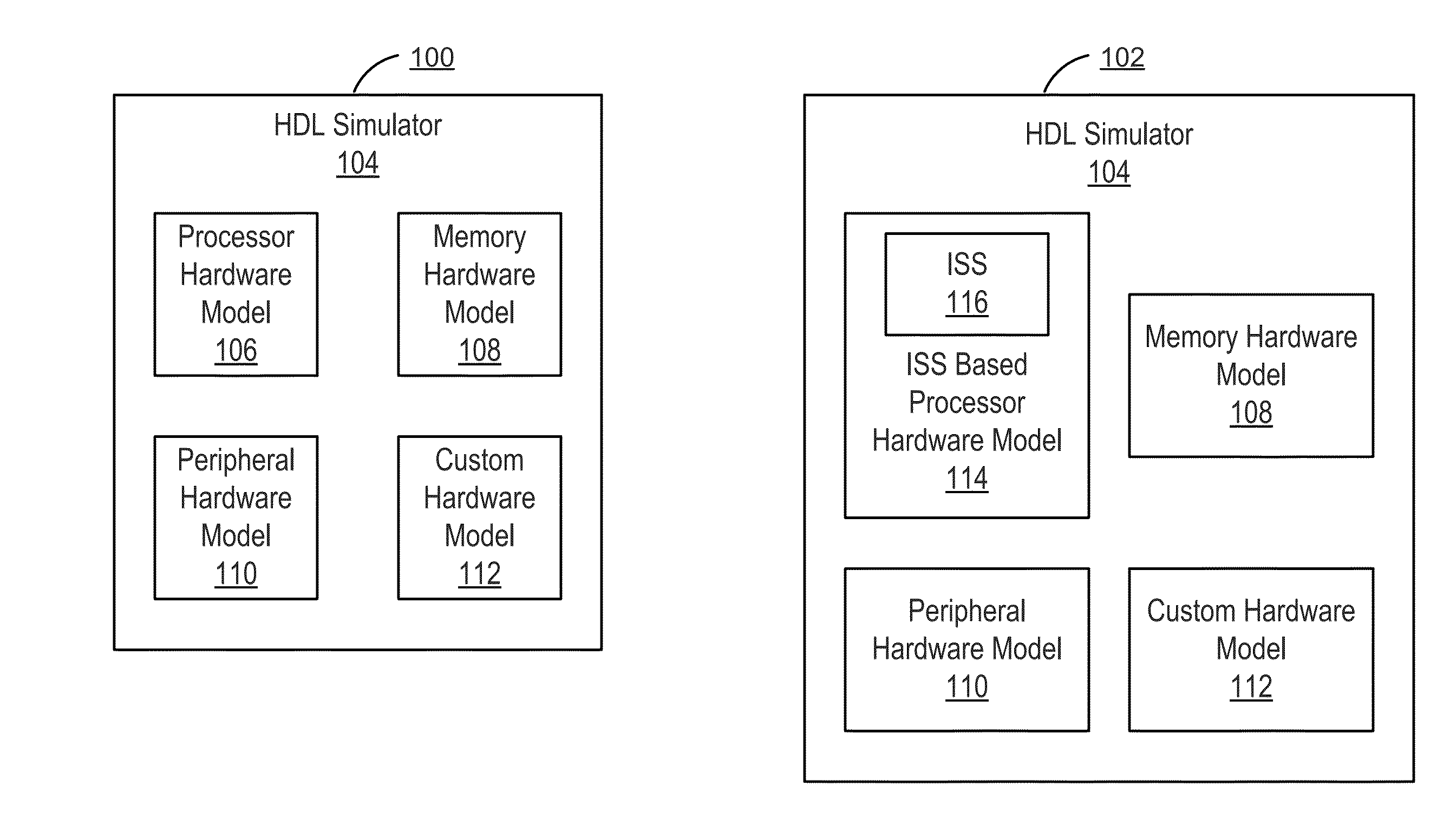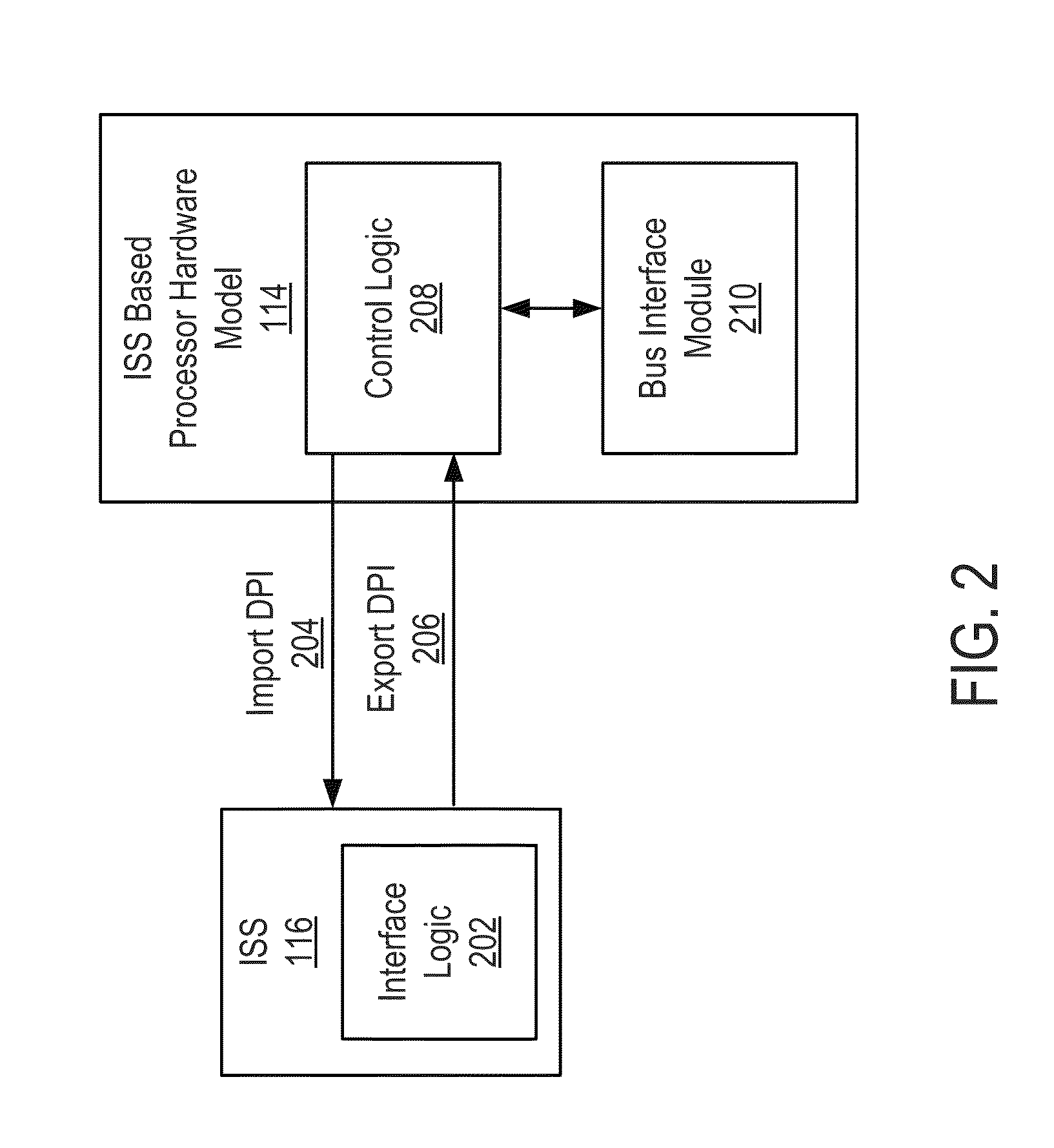Efficient mechanism in hardware and software co-simulation system
a co-simulation system and efficient mechanism technology, applied in the field of circuit simulation, can solve the problems of complex implementation of different mechanisms for communicating, synchronizing and controlling, and negatively affecting performance, so as to avoid costly inter-process communication (ipc), hide the complexity of software simulator integration, and improve user controllability and ease of us
- Summary
- Abstract
- Description
- Claims
- Application Information
AI Technical Summary
Benefits of technology
Problems solved by technology
Method used
Image
Examples
Embodiment Construction
[0017]The Figures (FIGS.) and the following description relate to preferred embodiments by way of illustration only. It should be noted that from the following discussion, alternative embodiments of the structures and methods disclosed herein will be readily recognized as viable alternatives that may be employed without departing from the principles of what is claimed.
[0018]Reference will now be made in detail to several embodiments, examples of which are illustrated in the accompanying figures. The figures depict embodiments of the disclosed system (or method) for purposes of illustration only. It should be recognized from the following description that alternative embodiments of the structures and methods illustrated herein may be employed without departing from the principles described herein.
[0019]For a system on a chip (SoC) design, a hardware model of a processor running in a hardware description language (HDL) simulator is very slow to execute application software. That's the...
PUM
 Login to View More
Login to View More Abstract
Description
Claims
Application Information
 Login to View More
Login to View More - R&D
- Intellectual Property
- Life Sciences
- Materials
- Tech Scout
- Unparalleled Data Quality
- Higher Quality Content
- 60% Fewer Hallucinations
Browse by: Latest US Patents, China's latest patents, Technical Efficacy Thesaurus, Application Domain, Technology Topic, Popular Technical Reports.
© 2025 PatSnap. All rights reserved.Legal|Privacy policy|Modern Slavery Act Transparency Statement|Sitemap|About US| Contact US: help@patsnap.com



